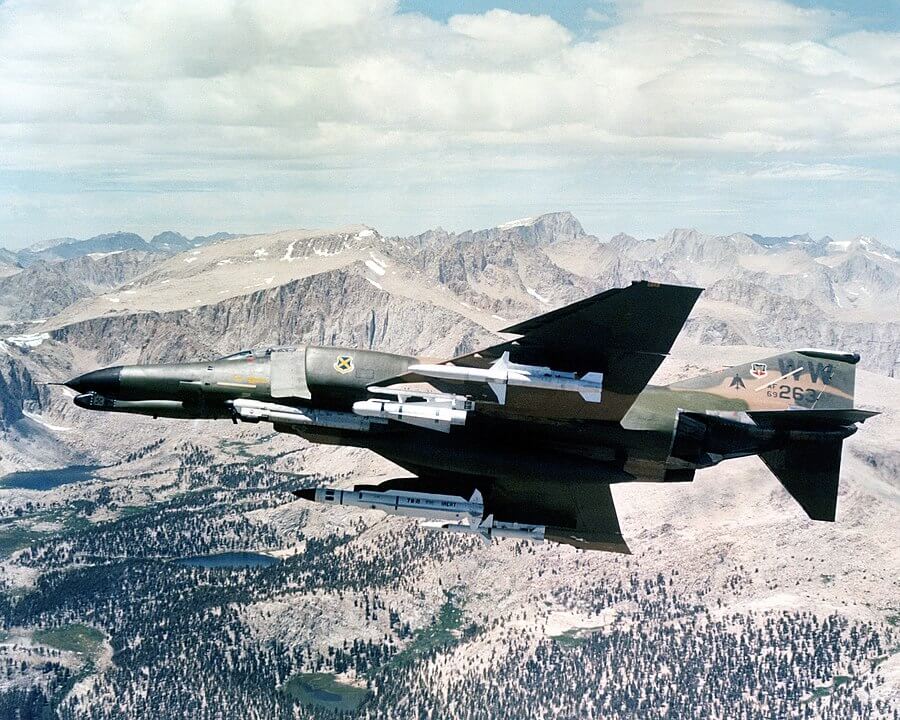SEAD – Suppression of Enemy Air Defence

I ran across a great video on YouTube discussing the basics of SEAD (acronym for Suppression of Enemy Air Defence.)
The SEAD mission is vital in the air battle environment, whether it’s over land or sea, because the ability for the bad guys to shoot down your planes is extremely detrimental to any air power.
The SEAD term originally came from the Wild Weasel code name, which is a code name given by the United States Armed Forces, specifically the US Air Force, to an aircraft, of any type, equipped with radar-seeking missiles and tasked with the Suppression of Enemy Air Defenses: destroying the radar and Surface-to-Air Missile installations of enemy air defense systems. “The first Wild Weasel success came soon after the first Wild Weasel mission 20 December 1965 when Captains Al Lamb and Jack Donovan took out a site during a Rolling Thunder strike on the railyard at Yen Bai, some 75 miles northwest of Hanoi.”
The Wild Weasel concept was developed by the United States Air Force in 1965, after the introduction of Soviet SAMs and their downing of U.S. strike aircraft over the skies of North Vietnam. The program was headed by General Kenneth Dempster.
Wild Weasel tactics and techniques began their development in 1965 following the commencement of Operation Rolling Thunder during the Vietnam War, and were later adapted by other nations during following conflicts, as well as being integrated into the Suppression of Enemy Air Defenses (SEAD), a plan used by U.S. air forces to establish immediate air supremacy prior to possible full-scale conflict. Initially known by the operational code “Iron Hand” when first authorized on 12 August 1965, the term “Wild Weasel” derives from Project Wild Weasel, the USAF development program for a dedicated SAM-detection and suppression aircraft. The technique was also called an “Iron Hand” mission, though technically this term referred only to the suppression attack before the main strike.) Originally named “Project Ferret”, denoting a predatory animal that goes into its prey’s den to kill it (hence: “to ferret out”), the name was changed to differentiate it from the code-name “Ferret” that had been used during World War II for radar counter-measures bombers.
In brief, the task of a Wild Weasel aircraft is to bait enemy anti-aircraft defenses into targeting it with their radars, whereupon the radar waves are traced back to their source, allowing the Weasel or its teammates to precisely target it for destruction. A simple analogy is playing the game of “flashlight tag” in the dark; a flashlight is usually the only reliable means of identifying someone in order to “tag” (destroy) them, but the light immediately renders the bearer able to be identified and attacked as well. The result is a hectic game of cat-and-mouse in which the radar “flashlights” are rapidly cycled on and off in an attempt to identify and kill the target before the target is able to home in on the emitted radar “light” and destroy the site.
The modern term used in the U.S. Armed Forces for this mission profile is “Suppression of Enemy Air Defenses”, or SEAD.
Want More Military Aviation Goodness?
Join us in our private Facebook group where you can enjoy the company of other likeminded military aviation fans, including a growing number of former & current military pilots, Radar Intercept Officers (RIO’s) and Weapon Systems Officers (WSOs).
Plus, get access to our videos and livestream content, all free of charge.
Click this link or the photo below to join.


